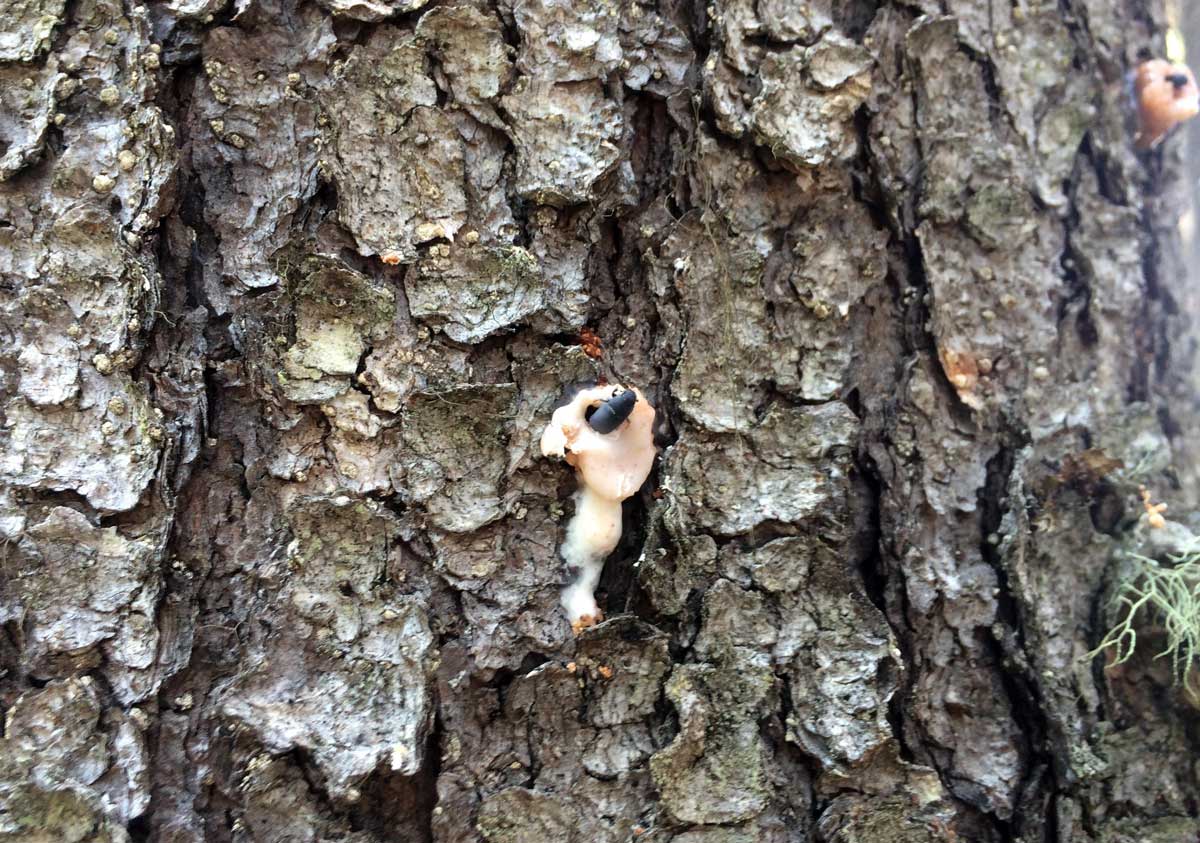
Mountain Pine Beetles in Jasper National Park represent a hybrid of populations from both the north and south.
New study pinpoints genetic roots of pine beetle infestation in Jasper National Park.
Using genetic tools, scientists have traced an invasive species that has devastated millions of trees on the Canadian landscape. And the mountain pine beetle is set to do further damage to one of our country's most iconic regions.
Jasmine Janes and Stephen Trevoy, lead authors of the new study, set out to trace the origin of Mountain Pine Beetles in Jasper National Park. Focused on describing the genetic signature of the beetles in the region, the researchers uncovered troubling results: that these particular beetles represent a hybrid of populations from both the north and south.
"What we discovered is an eye of the storm where we see a sort of mixture of two genetic populations coming together in Jasper National Park," said Janes. "The Jasper beetles have a different genetic signature from the ones in the Grande Prairie outbreak from 2009 and also different than the ones in the outbreak in British Columbia in 2005. The beetles from the southwest traveled through pine forest in BC until they got to the mountains, while the beetles from the north followed a continuous track of forest until they reached the Rockies. Once they both got to the mountains, they mixed and funneled back down to the forest edges."
Janes said the results are biologically fascinating, yet concerning for management. This mixture of an already adaptive species means increased genetic diversity, which might provide even more opportunity for the insects to adapt to and survive in different environmental conditions. Efforts in Alberta are ongoing to keep Mountain Pine Beetle outbreaks from becoming a full blown epidemic to the scale of destruction that British Columbia bore witness to just over a decade ago.
This research can help support the existing management system to slow the spread of the beetles, explained Janes. "Genetic monitoring can help us pinpoint those areas with high genetic diversity and areas that might be contributing to its spread. This is an opportunity to tailor some of the management practices to slow the spread," said Janes.
The genetic monitoring used here is conducted by using a wide array of collection techniques, some already used in conventional monitoring. Janes and her colleagues have suggested introducing genetic methods in addition to the routine aerial surveys spot-checking for already-infected trees that need to be destroyed.
Janes recently completed a postdoctoral fellowship, and Stephen Trevoy is a current Master's student, at the University of Alberta with renowned entomologist Felix Sperling, professor in the Department of Biological Sciences. Their research was funded by the NSERC TRIA Mountain Pine Beetle Strategic Network. Their work comes as a follow up to scientists sounding the alarm on the outbreak in Jasper National Park late in 2017, where Mountain Pine Beetles have already affected more than 20,000 hectares of land, with numbers only set to rise.
"Where did mountain pine beetle populations in Jasper Park come from? Tracking beetles with genetics" appears in the volume 94, issue 1 issue of the peer-reviewed Forestry Chronicle.